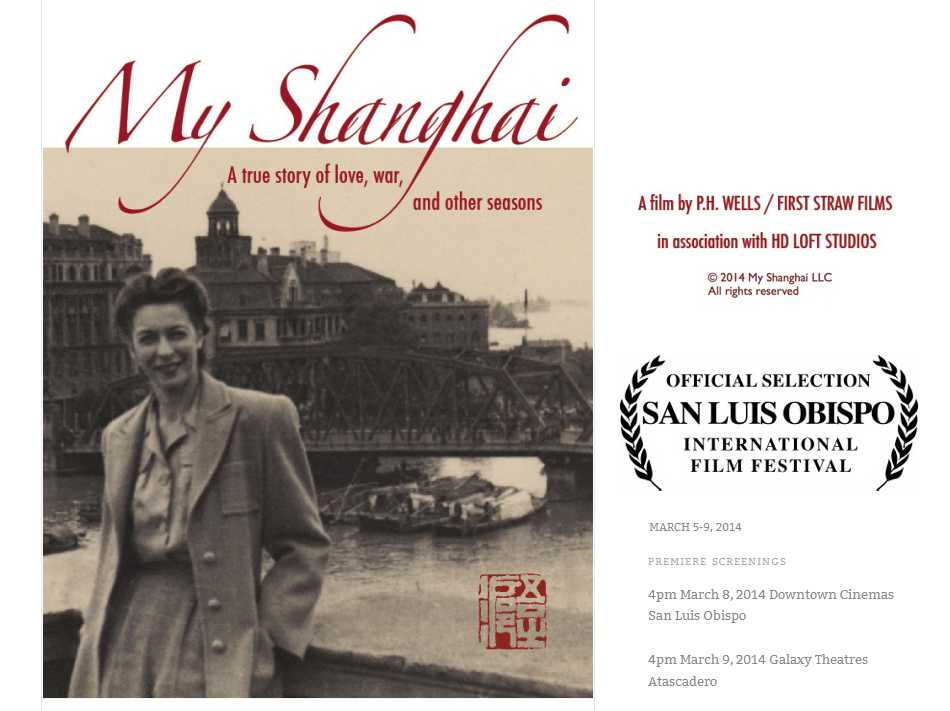
Coming Soon (March 2014): The Documentary Film "My Shanghai"
"My Shanghai" -- World Premiere 2014 San Luis Obispo International Film Festival -- March 5-9, 2014

|

Virginia McCutcheon -- Pam Wells Preface -- Two Stories ["Virginia McCutcheon's story"] and ["Pam Wells' story"] This article speaks of multiple topics--primarily as an introduction to the film "My Shanghai" (2014) which tells the story of Virginia McCutcheon, a British woman who survived imprisonment by the Japanese during World War II. The film embraces Virginia's “art of life,” as this remarkable woman unleashes her wit and wisdom on love, loss, art, and the art of survival. Additionally--this article also explores the "behind-the-scenes" film-making experiences and thoughts of film-maker P.H. Wells. In particular--her journey and transition from author to the more complex roles of film producer and editor. Laced throughout this story is the theme of how Japanese prints have touched someone's life in a profound and lasting manner. When Ms. Wells (Pam) contacted Ukiyoe-Gallery to learn more about a British woman’s small but cherished collection of Japanese prints, and described the tie-in to her "in-progress" documentary film, we immediately offered not only our print expertise, but also asked how we might get further involved in the project. We quickly offered the suggestion of co-authoring an article with Ms. Wells about her "My Shanghai" film, and also made a modest contribution to the development and funding of this endeavor. Shortly thereafter—we also learned that Pam had previously visited The Portland Art Museum as part of her research for the documentary. (As a local organization with which we've previously collaborated, please see our related Ukiyoe-Gallery.com article, "A Visit to The Portland Art Museum"). Pam also offered up her perspective on the The Portland Art Museum's recent Japanese print exhibit)-- providing her interesting viewpoint as a "filmmaker" as contrasted with that of being a "printmaker." Where to best begin??
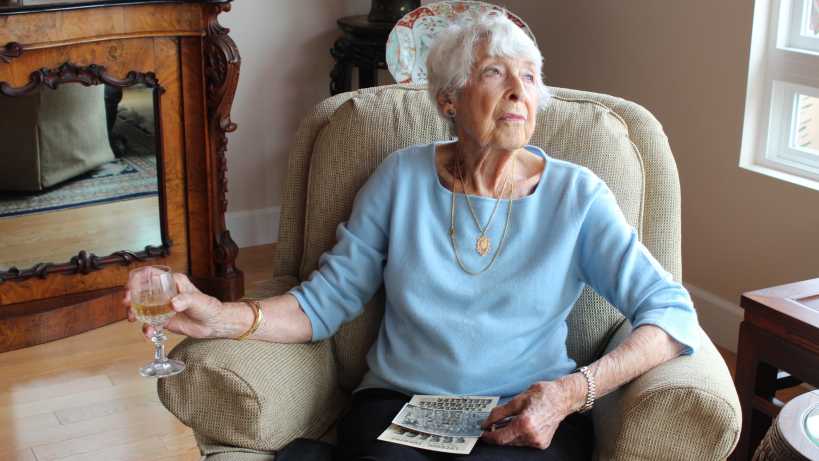
Virginia McCutcheon -- Recounting the events of 1941 "It suddenly came over all the radios that America... that Pearl Harbor had been bombed. You know, all the navy, the British and American navy ships, were all in the harbor. They sank one of the British ships right on the Bund there." "And we watched the whole thing." 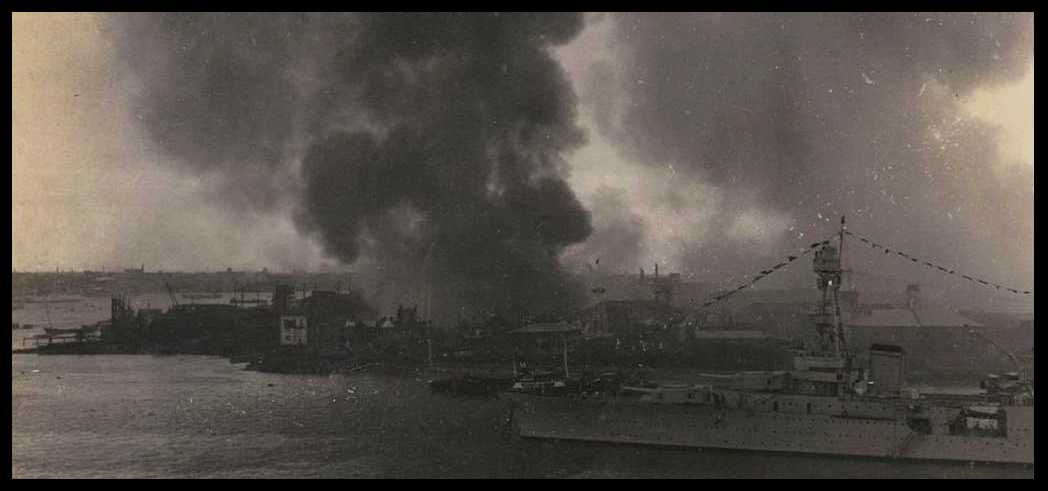
Bombs hit British and American ships in Shanghai’s Whangpoo River (Dec 1941)
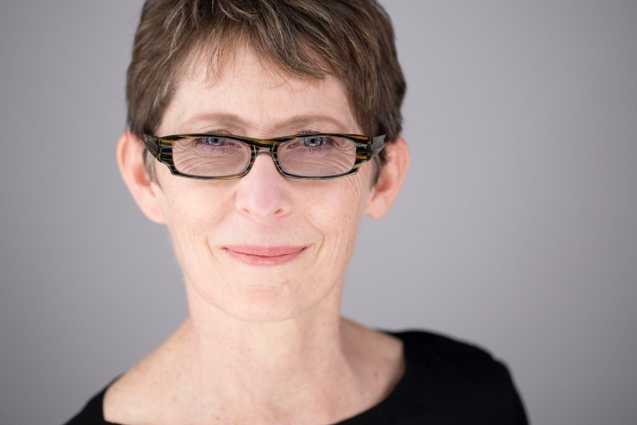
P.H. Wells -- Filmmaker The idea for the film took root more than two years ago on Memorial Day, 2011. Unknown to me, Virginia McCutcheon had been featured on a front page article of "The Tribune" newspaper in San Luis Obispo County, California which told about her wartime internment at Lunghwa Camp near Shanghai, China. Quite unexpectedly that same day, my cousin Ginny Palmer sent me a link to the front page of the San Luis Obispo's "Tribune." I clicked on it and there was a picture of Ginny and her mom, Virginia, on the newspaper's front page!! The headline boldly read: “POW of the Japanese--Los Osos woman’s extraordinary saga of World War II”--and Virginia McCutcheon had instantly become a local "celebrity" as a survivor of Lunghwa Camp in China during World War II. 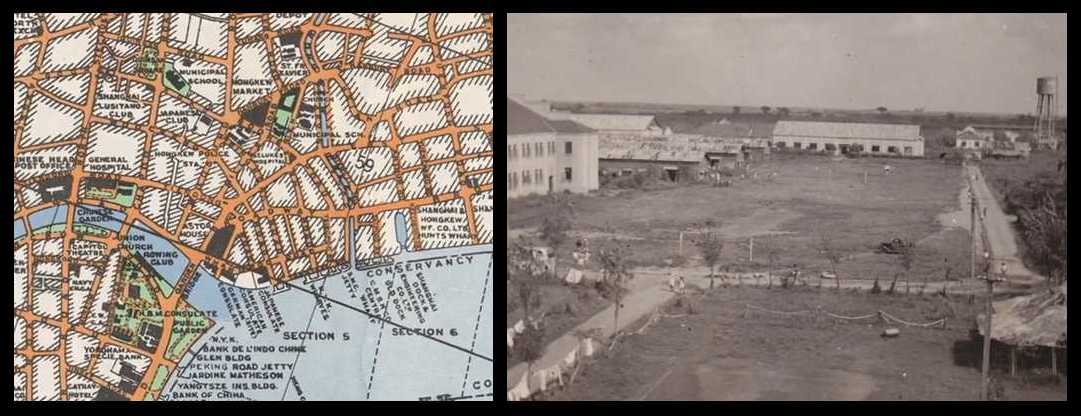
Shanghai Map (1930's) -- "Lunghwa Camp" (1942-45) "Lunghwa Camp" (known there as the "Lunghua Civil Assembly Centre") was one of several internment camps established by the Empire of Japan in Shanghai for containment of European and American citizens who were residents there in China prior to the Japanese Army occupation which began early December 1941. Linghwa was used to intern 1,988 people during the War years. the Japanese), and numerous outbuildings. There were fifty-nine dorms and 127 rooms for families." [Wikipedia] [Click to view San Luis Obispo County "The Tribune" May 29, 2011 "POW of the Japanese--Los Osos woman’s extraordinary saga of World War II" article, subtitled "Virginia McCutcheon was imprisoned in a camp in China for nearly four years and often lived in fear of execution."] Pam continues.... I should note that although Virginia and I share family ties (she's my cousin’s mother-in-law), I’d never actually met her. Her "stories" had simply never traveled my way. That was all about to change.... Ginny and I exchanged some quick emails -- Pam: "Wow, I had no idea! Your mom Virginia has a stunning place in history." Cousin Ginny replied: "HEY Pam--maybe you should write her story!!!!!!!!!" Pam (paraphrased): "Are you crazy? I'm making THE MOVIE!" As would soon be discovered--there was much MUCH MORE to Virginia's story.
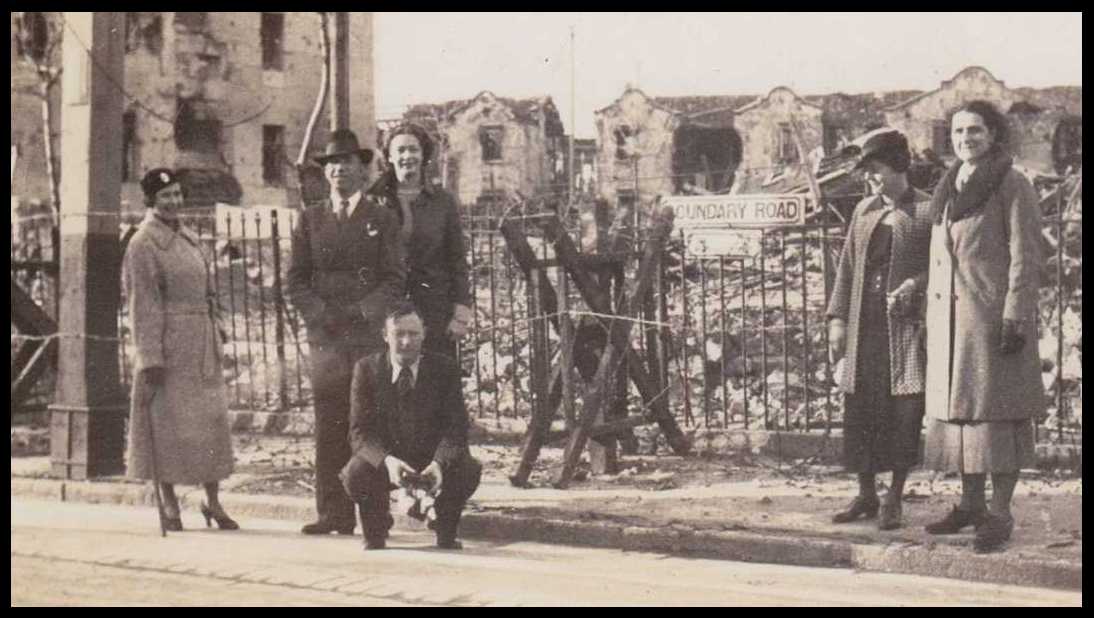
Shanghai Street Scene (late Dec 1941) Pam: "Did you feel you were personally in danger?" Virginia: "The shells were going over my house, you know, and some shrapnel came flying into one of the rooms I was sitting in, right into the wall, a big piece of hot shrapnel came through the window. And they were just firing into Shanghai, gradually trying to break in. And we were trying to stop them, of course, but that was a losing battle. So then, then everything happened." "The Japanese troops were roaring up and down the Bund and all the streets and getting drunk, and shouting and laughing and holding bottles of beer in their hand." “We’ve won!! We’ve taken Shanghai!!” 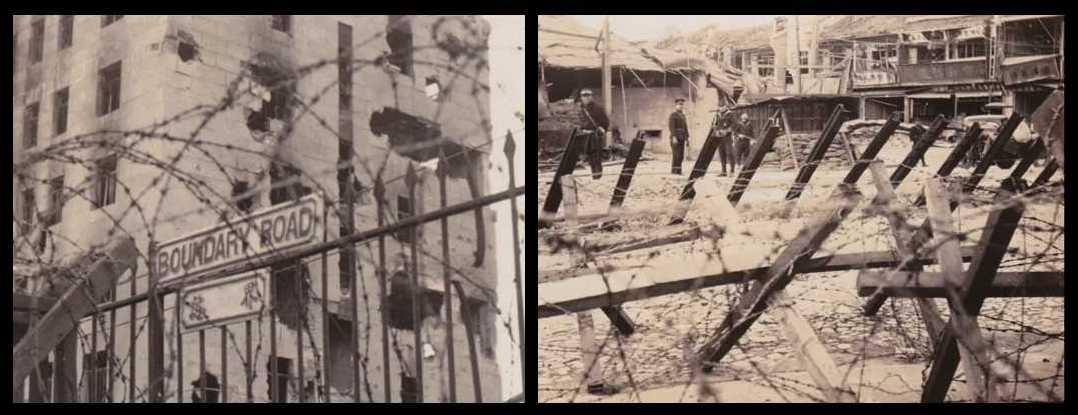
Shanghai Scenes
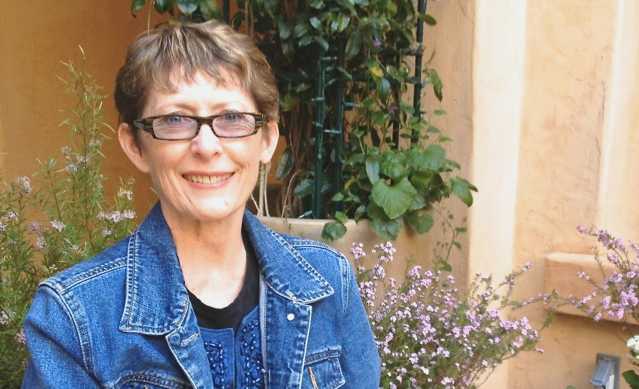
Pam Wells -- Film-maker The motivating impulse I'd needed to "go it alone" and actually BECOME a filmmaker came suddenly on Memorial Day 2011 in the form of a family telephone call from my cousin. This relative’s 91-year-old mother (Virginia McCutcheon) had been featured in a front-page story of "The Tribune" newspaper in San Luis Obispo County, California. Under the headline “POW of the Japanese,” Virginia described her internment at Lunghwa Camp near Shanghai, China, during World War II. The additional details of what I would soon thereafter upon meeting Virginia--beyond her wartime experiences--would soon shape the film for me. Yes--of course I could have written her memoir--but I wanted to preserve with film something no written account could possibly capture: her voice, her posture, her presence. Film would be the only possible way Virginia's story could be fully told.
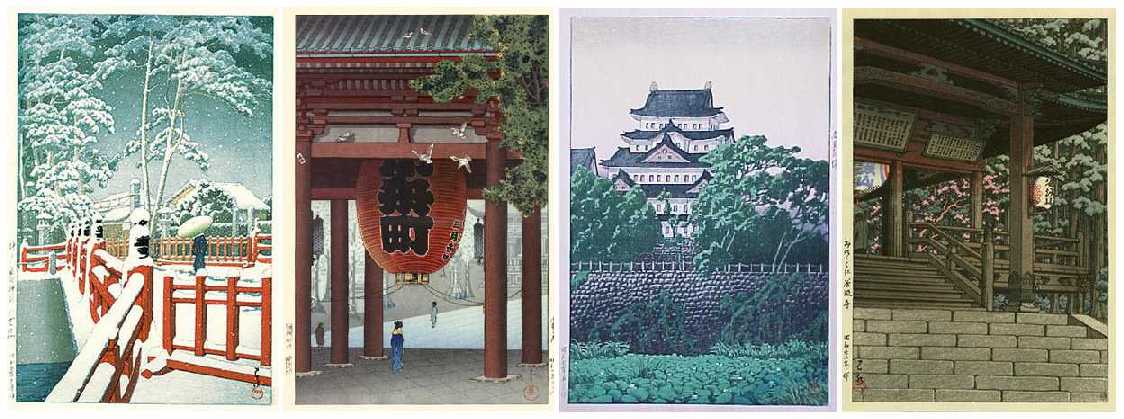
Hasui's "Yagumo Bridge" (winter) -- Koitsu's "Great Lantern" (fall) -- Hasui's "Nagoya Castle" (summer) -- Hasui's "Tanigumi Temple" (spring) Virginia made it clear that, unlike German concentration camps, Lunghwa was a working environment: austere, strict, but not harsh or punitive, and not without recreation. "There was a lot of hanky-panky going on," she says, and described meeting her husband-to-be, Bill McCutcheon, in the camp mess hall. Married right after the War, their life together took an unexpected turn in 1951 when they moved to Japan. Without bitterness, Virginia chose to embrace the Japanese culture. Now more than 60 years later, two things continue to hold a special place in Virginia’s heart and home: her practice of the flower arranging art of ikebana in the "sogetsu style," and her love for the Japanese woodblock prints she collected in Japan during the 1950s. At that long ago 1950's time Virginia chose four prints to represent each of the seasons. Three by Kawase Hasui: “Snow at Yagumobashi Bridge, Nagata Shrine” (1934) “Nagoya Castle” (1932) “Staircase to Tanigumi Shrine” (1947 and one by Tsuchiya Koitsu: “Great Lantern at Asakusa Temple” (1934).
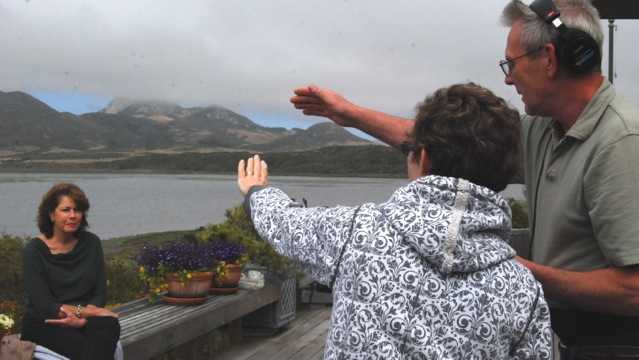
Ginny Palmer waits as director P.H. Wells discusses the shot with cinematographer Ron Macbeth (June, 2012) As leaps go, the move from screenwriting to documentary filmmaking is not a huge one. At least this is what I told myself when I met 91-year-old Virginia McCutcheon, a woman who, to quote a 17th-century Japanese poet, “shall forever know that life was not wasted.” I decided that this opportunity should not be wasted. I’d studied screenwriting and story analysis for several years, I’d written screenplays and had read for an international screenwriting competition. I’d picked up an award and some industry attention, but the goal of being a produced writer was unmet. It wasn’t until a friend of mine set out to make a short film ("A Rendezvous"), inviting me along as an Associate Producer, that I began to consider (some day) doing the same. Still, it seemed daunting -- green screen, Red camera? I was a little blue. Problem is, I’m not quite ready for prime time. I’m a newbie filmmaker. (Pam Wells, Nov 2011) So how do you go about making your first film? Well, you can take a class...."
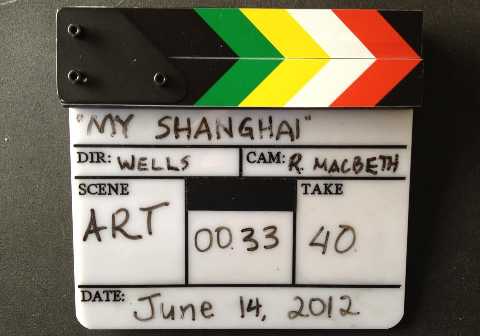
The Making of Movies -- "Scene....Take....Date...." -- then "Edit....Edit....Edit..." I recruited friends....and on a stormy day in June (2012), we packed my Subaru with gear and headed to Virginia's home on the California coast, where we had the luxury of shooting over four days. Her family provided not only their full support but willingness to be part of the film. And our small crew allowed Virginia to be at her best. Virginia graciously opened up about herself, her family, her loves and losses, more than she ever thought she could. She awed us with tales of her life in Shanghai and the events that followed. Her experience at Lunghwa -- the same camp made famous in J.G. Ballard's "Empire of the Sun" -- is the center of the documentary, but Shanghai, "the Paris of the Orient," is where it all began. Virginia was a pro, elegant and open. She was engaging, witty and sharp. A born storyteller. Sure to be wonderful on camera. It’s liberating--this working with images and sound. As a writer, I use language to create pictures in people’s heads. As an editor, I use the pictures themselves. I’m free to "nail them together" in any way that tells the story. (PW, Dec 2011) To date (June 2012) I have about 20 hours of interviews, dialogue and action to transcribe for "My Shanghai" (transcriptions are the written record of the video clips and other audio). Sure, I could hire someone to do it--but there’s no better way for it to soak in than to do it yourself. Then you can "reverse engineer" the script. Screenwriters will swear you need a script before you can shoot a movie. There are exceptions.... Welcome to "My Shanghai." And to my film-maker's journey....
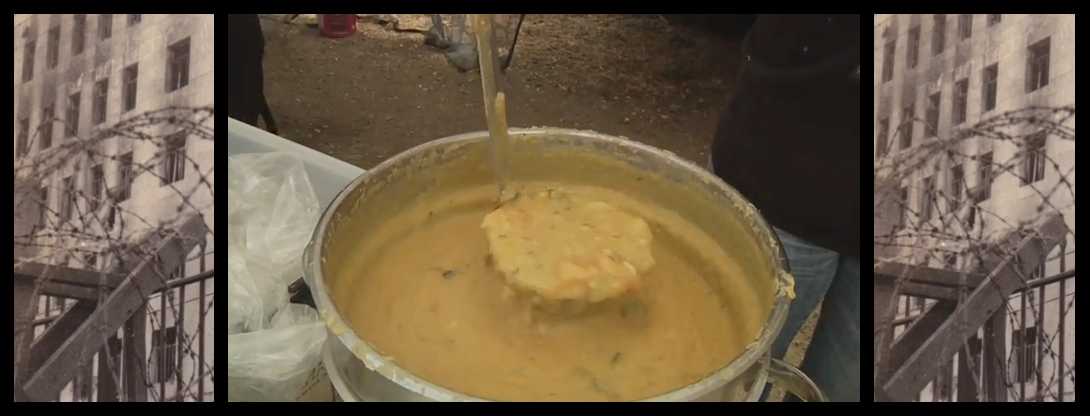
Camp Food Became Scarce During the Wartime Years As food became scarce, meals were limited to rice and water. “We were so optimistic,” Virginia McCutcheon said. “Everybody said, ‘OK — another three months.’ If we’d known we were going to be in there three years and eight months. ...” 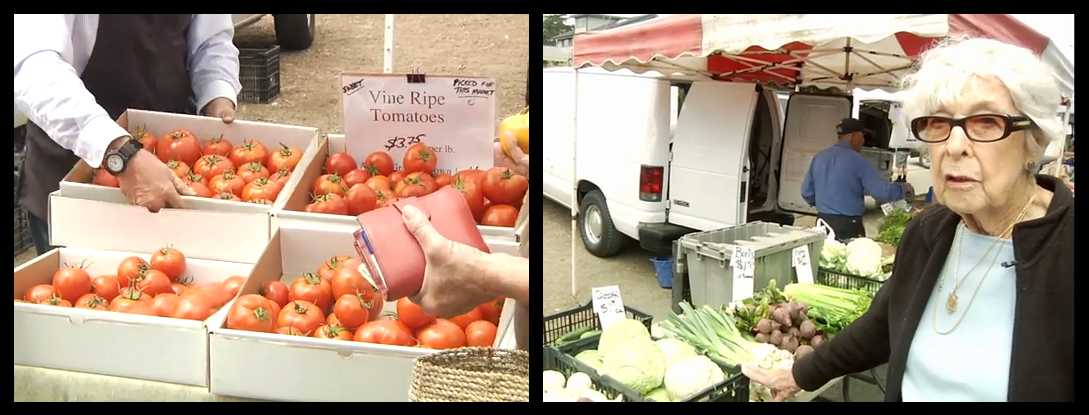
Today -- Bountiful Produce at Farmer's Markets Years later--unlike the hard times of War years--today's peacetime is one of food abundances and almost unlimited choices. Still today, Virginia often thinks back to the lean times she spent long ago during the wartime years spent while in Shanghai.
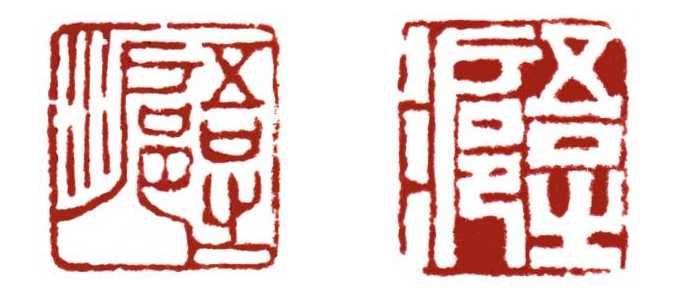
Symbolism -- "Yang" and "Yin" (positive and negative) In short--typical "western" format uses a three-act storytelling format--as beginning (introduction), middle (development), and end (conclusion). In contrast--Chinese/Japanese format adds a FOURTH element between the story's middle and end--using these 4 steps: 1 "Ki" = introduction of characters and their world 2 "Sho" = development of characters and their situation 3 4 "Ketsu" = connection and consequence In the eastern tradition, the second act takes us deeper, and then comes "ten" — "the twist, the curve ball, the third act" from nowhere. It’s the new element which has not been plotted with cookie crumbs along the way. You can’t go back and find the clues to this kind of twist. And it doesn’t have to be earthshaking, just unexpected. The story ends with connection even if it leaves some things unresolved. "I am truly fortunate in this regard. Pity the documentarian who cannot continue to delve into her subject’s story and discover a third act twist. And pity the documentarian who does not experience the telling of a life story as an ongoing adventure in itself, a story still unfolding." I first talked about my interest in "ki-sho-ten-ketsu" last February, and having come this far, I can truly say I was able to delve into Virginia’s story and discover a third act twist. What you discover, as a documentarian, is that recording a life story is an ongoing adventure in itself. Even at 92 years old, Virginia has a story that would be given over time, layer by layer. "My Shanghai" has been designed to reflect that. Last February [2013] I wrote, "It’s too early to say whether "My Shanghai" will take its final form using "ki-sho-ten-ketsu." Virginia's life in four acts? Four may not be enough." [Pam, Feb 2013] Well, it’ll have to do. As production comes to an end [Dec 2013], "the blocks are cut" and "the sheets are printed." And the music is beautiful!
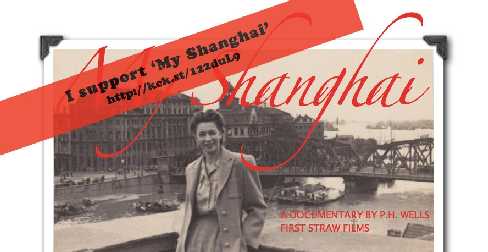
Fundraising for a Worthy Cause You Can Help Out Too.... Please visit Pam Well's "My Shanghai" Facebook page to lend your support. 
Facebook's "My Shanghai Film" The more "likes" there--the better to spread the word about "My Shanghai"! 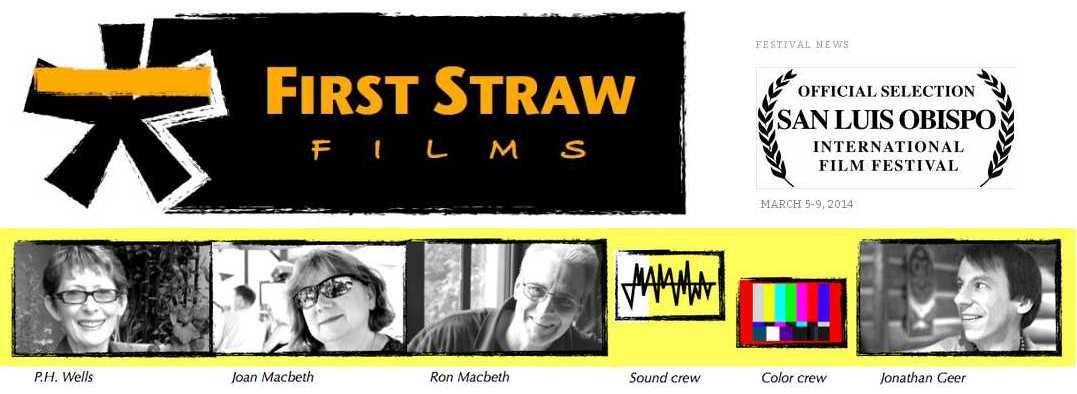
First Straw Films and Crew

Milwaukie Oregon's "Bomber Gas Station/Restaurant"
|